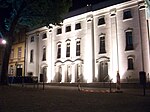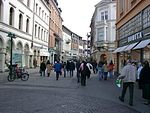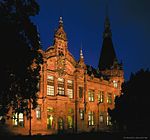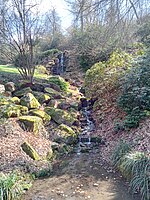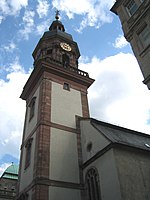Heidelberg University Faculty of Chemistry and Earth Sciences
The Faculty of Chemistry and Earth Sciences is one of twelve faculties at the University of Heidelberg. It comprises the Institute of Inorganic Chemistry, Institute of Organic Chemistry, Institute of Physical Chemistry, Institute of Geography, Institute of Geology and Paleontology, Institute of Mineralogy, and the Institute of Environmental Geochemistry. Chemistry was established as a separate discipline at the University of Heidelberg in 1817 with Leopold Gmelin being appointed ordinary professor of chemistry and medicine. 1895 is considered to be the date of foundation of Geography at the University of Heidelberg as it was from this year on that lectures in physical and mathematical geography were held on a regular basis. In 1899 the first professorship in geography was established, filled by Alfred Hettner.
Excerpt from the Wikipedia article Heidelberg University Faculty of Chemistry and Earth Sciences (License: CC BY-SA 3.0, Authors).Heidelberg University Faculty of Chemistry and Earth Sciences
Hauptstraße, Heidelberg Altstadt (Altstadt)
Geographical coordinates (GPS) Address Nearby Places Show on map
Geographical coordinates (GPS)
| Latitude | Longitude |
|---|---|
| N 49.4112062 ° | E 8.7043967 ° |
Address
Hauptstraße 114
69117 Heidelberg, Altstadt (Altstadt)
Baden-Württemberg, Germany
Open on Google Maps
